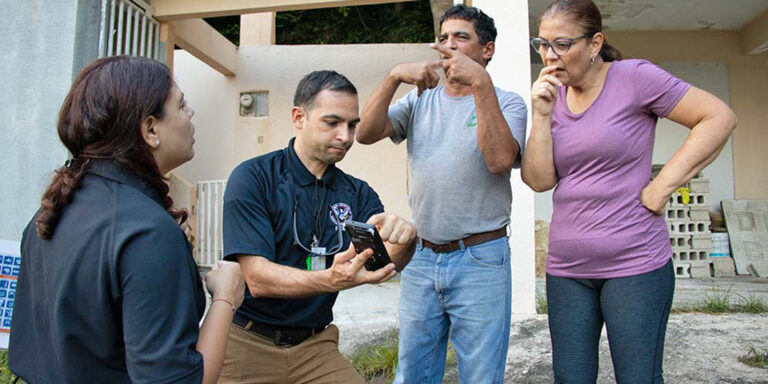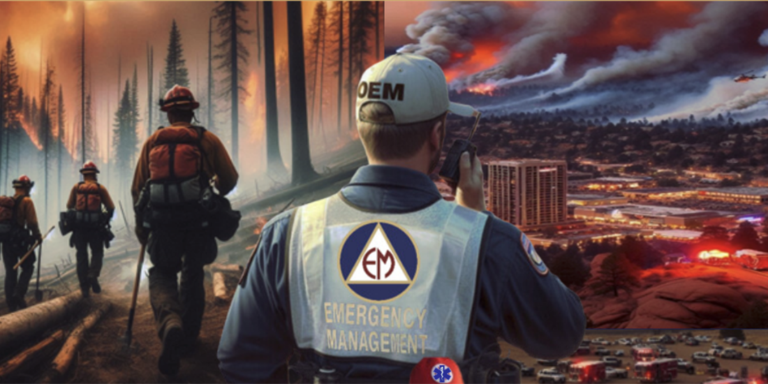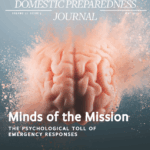
Archives

Carcass management is rarely top of mind for emergency managers, but during mass animal deaths, it tests preparedness, coordination, and public trust. Including it in all-hazards planning closes a critical gap and boosts community resilience.

Why Emergency Management Is a Good Career for Transitioning Veterans
June 11, 2025
For many service members, the transition from the military to a civilian workforce can be challenging. They have been trained in a specialized skill set and now must determine how to effectively apply those skills in civilian employment. In the emergency management field, veterans can find the vocational purpose they

Not Lost in Translation: A Multilingual Corps Approach
May 14, 2025
Disaster survivors and responders often face psychological hazards like acute stress disorder, depression, and post-traumatic stress. These issues are worsened in multilingual communities, where language barriers hinder communication and delay aid. Effectively addressing these challenges goes beyond basic translation or ad hoc interpreting to address the whole community.

Disaster Stress Management in an Emergency Operations Center
May 7, 2025
Disasters affect responders and community members, but they also bring trauma to those working inside emergency operations centers. Distance from the scene does not create a shield from stress. Secondary traumatic stress can impair leadership, so managing this stress is vital for effective emergency response.

Farm to Power: New Hazards in Rural Communities
March 26, 2025
In the interest of reducing methane pollution and establishing a revenue stream for a renewable resource, dairy and livestock operators are creating mechanisms to produce compressed natural gas. This new technology reduces greenhouse gases but also introduces new hazards to rural communities.

Beyond the Showcase: Strengthening Biosecurity at Livestock Exhibitions
March 5, 2025
Hazards and risks associated with state and local fairs mirror those of other high-attendance events—medical emergencies, mass casualty incidents, and other public safety risks. However, within the food and agriculture sector lies an additional risk: the spread of animal diseases, which can have catastrophic consequences.

Emergency Management has Evolved: Why the All-Hazards Era is Over
February 26, 2025
While initially useful, the term “all hazards” no longer accurately describes the functions or mission of the emergency management discipline. The current generation of emergency management has moved beyond all hazards to become “hazard agnostic.”

Advisory Board Spotlight: Interview with Sadie Martinez
February 19, 2025
Sadie Martinez is on the advisory board for the Domestic Preparedness Journal. Sadie is the Colorado State Division of Homeland Security and Emergency Management’s Access and Functional Needs Coordinator. Sadie uses the Communication, Maintaining Health/Medical, Independence, Support Services and Safety, and Transportation (CMIST) resource framework, which provides a whole-community inclusion

Elevating Healthcare Emergency Preparedness Exercises with Realistic Patient Simulation
February 19, 2025
Overlooked until disaster strikes, many emergency management departments struggle with personnel and budgetary constraints, yet the demand placed on these departments continues to increase. Nevertheless, hospitals and health systems need to be prepared, and full-scale exercises are a comprehensive method for achieving this preparedness.

The Forefront of Innovation in Training & Exercises: Disaster Gaming
February 12, 2025
Disaster wargaming may significantly change the future of tabletop exercises in emergency management and homeland security. Long used effectively to win and prevent wars throughout history, wargaming offers more realistic and engaging scenarios for emergency managers to prepare for real-world disasters.





